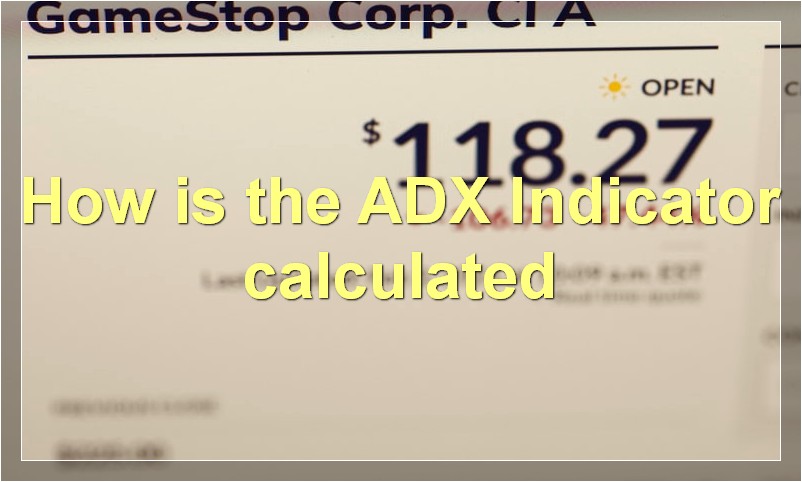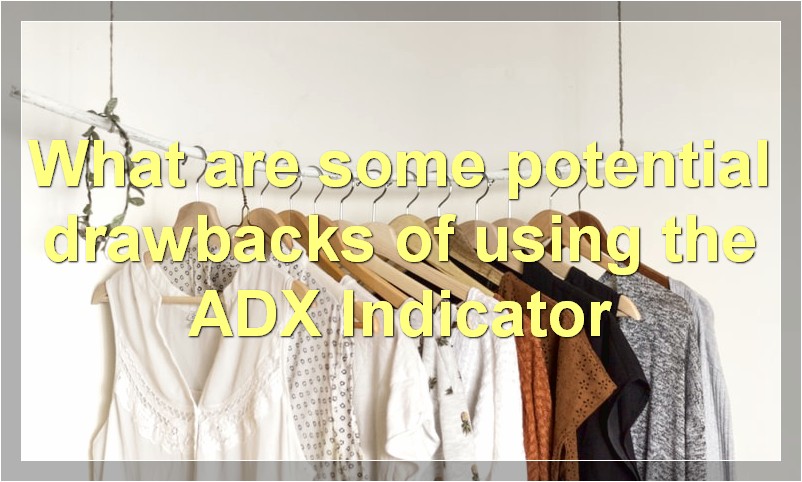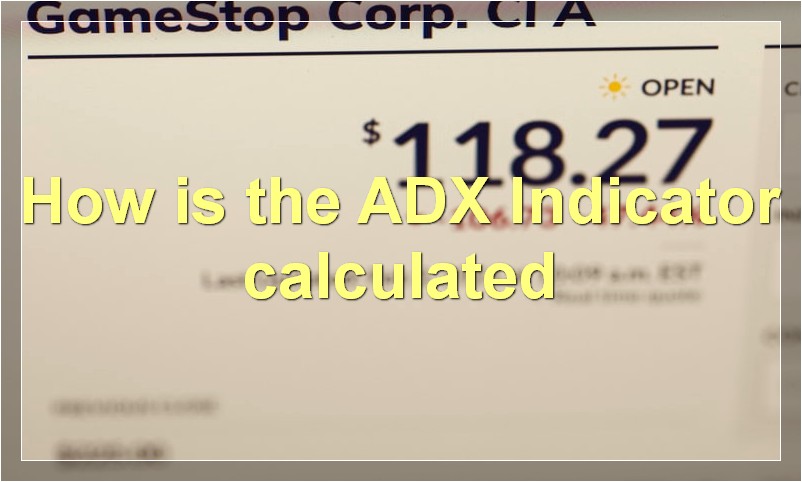If you’re looking to get started in forex trading, the ADX indicator is a great place to start. In this article, we’ll give you everything you need to know about the ADX indicator, including how to use it and what it can tell you about a currency pair.
What is the ADX Indicator
What is the ADX Indicator?
The ADX indicator is a technical analysis tool that measures the strength of a trend. It is commonly used to determine whether an asset is in a trending market or not. The indicator can also be used to identify the direction of the trend.
The ADX indicator is calculated using two other indicators, known as the +DI and -DI. These indicators are used to measure the direction and magnitude of price movements. The ADX indicator is plotted on a scale from 0 to 100. A reading above 25 indicates a strong trend, while a reading below 20 indicates a weak trend.
The ADX indicator can be used in conjunction with other technical indicators to confirm trends and make trading decisions. For example, if the ADX indicator is rising and the +DI indicator is above the -DI indicator, this could be a bullish sign indicating that prices are likely to continue to rise.
The ADX indicator is a valuable tool for traders who want to take advantage of trends in the market. By understanding how this indicator works, traders can make more informed decisions about when to enter and exit trades.
How is the ADX Indicator calculated

The ADX indicator is calculated by taking the difference between a positive directional indicator (+DI) and a negative directional indicator (-DI). The result is then divided by the sum of the two indicators. This calculation provides a number that represents the strength of the trend.
The ADX indicator can be used to help traders determine whether a market is trending or ranging. A reading above 25 suggests that the market is trending, while a reading below 20 suggests that the market is ranging.
What do the ADX Indicator values mean
The ADX indicator is a tool that measures the strength of a trend. ADX values can be used to help identify whether a market is in a strong or weak trend, and can also be used as a warning signal for potential trend reversals.
ADX values range from 0-100, with readings below 20 considered to be indicative of a weak trend, and readings above 50 indicating a strong trend. However, it is important to note that the ADX indicator is a lagging indicator, so its readings should be used as part of a wider market analysis rather than as standalone signals.
In general, rising ADX values suggest that a market is becoming more trending, while falling ADX values suggest that a market is losing its directional momentum. However, it is important to remember that the ADX indicator is a relative rather than absolute measure, so two markets can both have strong trends but have different ADX readings depending on the strength of the underlying trends.
How can the ADX Indicator be used to trade forex
The ADX indicator is a technical indicator that is used to measure the strength of a trend. The ADX indicator can be used to help traders decide when to enter and exit a trade. The ADX indicator is calculated using a moving average of price range expansion over a given period of time.
What are some common trading strategies that use the ADX Indicator
The ADX indicator is a popular tool used by traders to measure the strength of a trend. The ADX indicator can be used to identify both trend direction and trend strength. The ADX indicator is calculated using a combination of three indicators: the +DI, -DI, and the ADX itself.
The +DI measures the upward momentum of the trend, while the -DI measures the downward momentum. The ADX is the average of these two indicators and is used to confirm the strength of the trend.
A common trading strategy that uses the ADX indicator is to buy when the +DI crosses above the -DI, and sell when the +DI crosses below the -DI. Another common strategy is to buy when the ADX is above 25 and sell when it is below 20.
What are some potential drawbacks of using the ADX Indicator

There are a few potential drawbacks to using the ADX indicator that traders should be aware of. First, the ADX is a lagging indicator, so it will only tell you what has happened in the past and not what is happening in the present. This can lead to some false signals, especially in a choppy market. Second, the ADX can be slow to react to changes in trend. This means that you may miss out on some potential profits if you don’t use other indicators or price action to confirm the ADX signal. Finally, the ADX is a bit more complicated than some other indicators and takes a bit of time to get comfortable with using it correctly.
How can the ADX Indicator be combined with other technical indicators
There are a number of different ways that the ADX indicator can be combined with other technical indicators to form a trading strategy. One popular way is to use the ADX in conjunction with support and resistance levels. By looking at the ADX and where it is currently located in relation to past support and resistance levels, traders can get a good idea of whether the market is likely to move in a particular direction.
Another way to combine the ADX with other technical indicators is by using it to confirm price action. For example, if the ADX is rising along with prices, this is generally seen as a confirmation that prices are indeed trending higher. Conversely, if the ADX is falling while prices are rising, this may be seen as a bearish sign and could lead traders to Sell or short the market.
There are many other ways in which the ADX can be combined with other technical indicators, and it really depends on the trader’s individual preferences as to which methods work best. experimentation and backtesting are usually required in order to find which combination of indicators works best for a particular trading style.
What are some common misunderstandings about the ADX Indicator
ADX is a popular indicator used by traders to measure the strength of a trend. However, there are some common misunderstandings about how the ADX indicator works that can lead to problems for traders.
One misunderstanding is that the ADX indicator always gives clear buy and sell signals. This is not the case, as the ADX only measures the strength of a trend, not the direction. Traders need to use other indicators or analysis to determine the best time to enter or exit a trade.
Another misunderstanding is that the ADX indicator is perfect for all timeframes and all markets. This is also not the case, as the indicator works best on longer timeframes and in markets with clear trends. shorter timeframes and choppier markets can produce false signals with the ADX indicator.
Finally, some traders believe that they can just use the ADX indicator alone to make trading decisions. While the ADX can be a helpful tool, it should be used in conjunction with other indicators and analysis to get the best results.
Which timeframes are best suited for using the ADX Indicator
There is no definitive answer to this question as it depends on the trader’s individual preferences and trading style. However, some traders find that using the ADX indicator works best when applied to longer timeframes, such as the 4-hour or daily chart. This gives the indicator more time to filter out false signals and produce a more accurate reading.
Can the ADX Indicator be used in all market conditions
The ADX indicator can be used in all market conditions to help identify the strength of a trend. When the ADX is above 25, it indicates a strong trend. If the ADX is below 20, it indicates a weak trend. The ADX can be used in all market conditions to help traders identify the strength of a trend and make better trading decisions.

